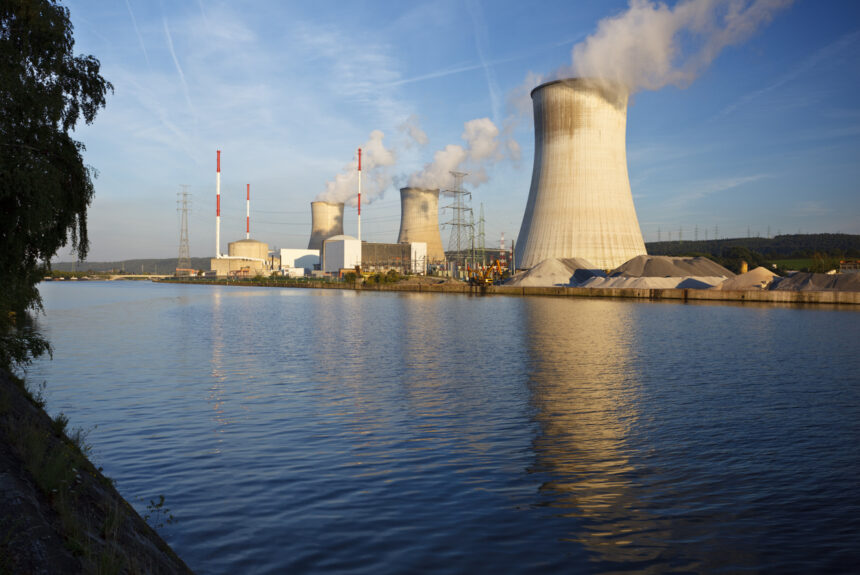This article originally appeared in Newsweek.
If you need your garbage collected, you call Waste Management. But if you’re a nuclear power plant operator, don’t bother calling the federal government—in 40 years they still haven’t made a pickup.
In 1982, Congress passed the Nuclear Waste Policy Act (NWPA), which directed the Department of Energy to site, build, and operate a repository for the disposal of high-level waste and spent nuclear fuel. Since that time, political paralysis has prevented the government from creating a storage site, which has left spent fuel in communities that did not consent to its presence and were promised its removal. Overcoming this decades-long failure is critical to reviving nuclear power and achieving climate goals without unfairly burdening local populations or taxpayers.
>>>READ: Securing America’s Nuclear Energy Fuel Supply Chain
The federal government’s inability to fulfill its legal obligation has not stopped the private sector from safely managing spent nuclear fuel. For over 30 years power plant operators have stored spent fuel with zero incidents of radioactive leakage or death. Since the 1950s, the U.S. has generated a little over 90,000 metric tons of waste, which would be easy to permanently store and manage. If it were all stacked up, it would fit on a single football field at a depth of less than 10 yards.
While the industry’s safety in the handling of spent fuel is commendable, the status quo is not sustainable for taxpayers or the environment.
The Department of Energy still holds the obligation to collect and dispose of the nation’s spent fuel. But with no national storage facility available, the federal government currently pays power plant operators to store spent fuel on-site. Taxpayers have been left to pick up the tab, spending $2 million per day and nearly $9 billion total since 1998. If left unaddressed, this figure will rise to an estimated $30 billion by 2030.
America’s inability to implement a feasible waste solution has also come at a cost to the environment. Eleven states—including California, New York, and New Jersey—have imposed moratoriums on new nuclear power until a repository is completed. Instead of building out a fleet of reliable, carbon-free nuclear energy, these states have placed their hopes on renewables, which need baseload natural gas to survive.
Finding a solution to this challenge will require political willpower, community engagement, and innovative thinking.
Many of the answers have been outlined already in the 2012 Blue Ribbon Commission’s report, which includes eight high-level recommendations to address spent fuel storage in the U.S. To date, the Department of Energy has begun to implement only one of those recommendations—starting the process of developing a consent-based siting process for an interim storage facility for spent fuel in 2021.
>>>READ: Congress Charts a Path to Unleash American Nuclear Power
However, under the current structure of the NWPA, the Department of Energy is not legally authorized to build an interim storage facility. While the original NWPA mandated and described a process to select a location for a repository, subsequent amendments have limited the scope to a single site, Yucca Mountain in Nevada. The law now functionally excludes consideration of any other sites or storage methods.
Congress should reform the law to give the Department of Energy the flexibility to site permanent and temporary storage facilities as it sees fit. Importantly, funding for the construction of these sites already exists through the Nuclear Waste Fund, which has over $44.3 billion collected to be spent on a nuclear waste disposal facility.
Reducing restrictions to a consent-based process is in the best economic and environmental interest of the United States. As has happened in the case of Yucca Mountain, a lack of community buy-in increases costs and delays projects. However, when stakeholders are engaged, approval for the nuclear industry greatly improves. In fact, the communities most supportive of nuclear power are the ones that have the technology in their vicinity.
Congress also should continue to fund R&D programs like the Advanced Reactor Demonstration Project, which is working to deploy a sodium-cooled fast reactor that effectively runs on spent nuclear fuel at the site of a retiring coal plant in Kemmerer, Wyoming. If this project is successful, it could provide a solution to address America’s spent fuel challenges.
It has been over 40 years since Congress first set out to establish a storage facility for spent nuclear fuel in the United States. Its failure to do so has cost taxpayers and the environment dearly, but solutions remain. By reforming the broken NWPA, engaging with communities, and investing in innovation, the U.S. can more efficiently handle its spent fuel and address one of the biggest roadblocks to unleashing a nuclear energy revolution.
The views and opinions expressed are those of the author’s and do not necessarily reflect the official policy or position of C3.
